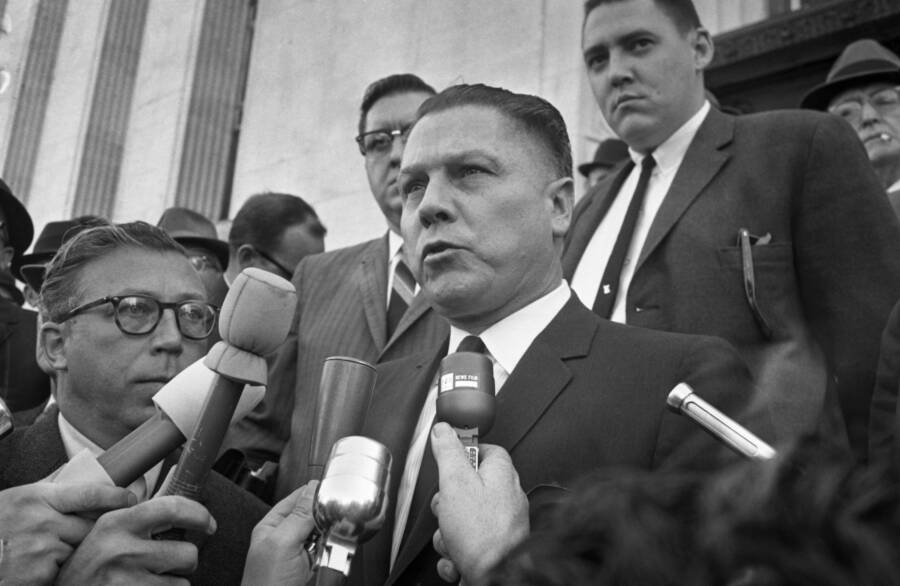The trial of Jimmy Hoffa, one of the most intriguing and high-profile court cases in American history, holds a unique place in the annals of legal drama. The setting of this trial, in Nashville, Tennessee, adds complexity and fascination to the story. This blog delves into the history and unique aspects of the Jimmy Hoffa trial in Nashville.
Background: Who Was Jimmy Hoffa?
James Riddle Hoffa, known as Jimmy Hoffa, was a prominent and controversial labor leader. As the President of the International Brotherhood of Teamsters, Hoffa was a significant figure in the labor movement. However, his alleged connections with organized crime and his combative style of leadership brought him into the crosshairs of law enforcement and the public eye.
The Road to Nashville
The path that led to Hoffa’s trial in Nashville was paved with numerous legal battles and investigations. Hoffa had been under the scrutiny of the Kennedy administration, particularly by Attorney General Robert Kennedy, who made it a personal mission to tackle organized crime and corruption within unions.
The specific charges that brought Hoffa to trial in Nashville in 1964 were jury tampering, conspiracy, and mail and wire fraud. These charges were related to his efforts to influence the jury in an earlier trial held in Chattanooga, Tennessee, where he had been accused of violating labor laws.
Nashville: An Unconventional Choice
Nashville, Tennessee, was an unconventional choice for such a high-profile trial. Known more for its musical heritage than its legal battles, Nashville provided a distinct backdrop to the Hoffa trial. This choice of location was partly due to the need for a venue outside of Hoffa’s base of power in the North, where his influence was extensive and deeply entrenched.

The Trial: A Media Spectacle
The trial quickly turned into a media spectacle. Jimmy Hoffa, a nationally recognized figure, drew significant public and media attention. Reporters and curious onlookers flocked to Nashville, turning the courthouse and its surroundings into a buzzing hive of activity.
The prosecution’s case hinged on proving that Hoffa had attempted to bribe jurors in the Chattanooga trial. The defense, meanwhile, argued that Hoffa was the victim of a political witch-hunt, an argument that resonated with his supporters who saw him as a champion of the working class.
Key Figures and Turning Points
The trial featured a cast of colorful characters. Hoffa himself was a charismatic and powerful presence. The prosecution team, tasked with taking down one of America’s most influential labor leaders, faced an uphill battle in proving their case against such a formidable defendant.
One of the key turning points in the trial was the testimony of Edward Partin, a Teamsters business agent from Baton Rouge, Louisiana. Partin, acting as an informant for the government, provided critical testimony that implicated Hoffa in the jury tampering charges.
The Verdict and Its Aftermath
After a lengthy and contentious trial, Jimmy Hoffa was found guilty of jury tampering and sentenced to eight years in prison. This verdict was a significant blow to Hoffa and marked the beginning of his downfall.
Hoffa’s conviction in Nashville was not the end of his legal troubles. In 1967, he was jailed for another conviction, this time for fraud and jury tampering in a separate case. He was released from prison in 1971 after receiving a commutation from President Richard Nixon, under the condition that he not engage in union activities until 1980.

The Unique Setting of Nashville
The choice of Nashville for the trial had several implications. Firstly, it removed Hoffa from his base of power and support, making it more challenging for him to influence proceedings. Secondly, the location in the heart of the South, with its own distinct cultural and political landscape, provided a contrast to Hoffa’s typical northern urban backdrop. This setting perhaps played a role in how the trial was perceived by the public and the jury.
Legacy of the Trial
The Jimmy Hoffa trial in Nashville remains a significant chapter in American legal and labor history. It showcased the complexities of labor politics, the intersections of law and power, and the relentless pursuit of justice by the government. The trial also highlighted the intricate dance between legal strategy and public perception, a dance that played out dramatically in the courts and media of Nashville.
Conclusion
The Jimmy Hoffa trial in Nashville, TN, stands as a unique and pivotal moment in American history. It was not just the trial of a man, but a trial that represented the struggles and conflicts of an era. Nashville, with its unique cultural and historical setting, provided the stage for this dramatic chapter, a chapter that continues to fascinate and intrigue scholars, legal professionals, and the public alike.







Recent Comments